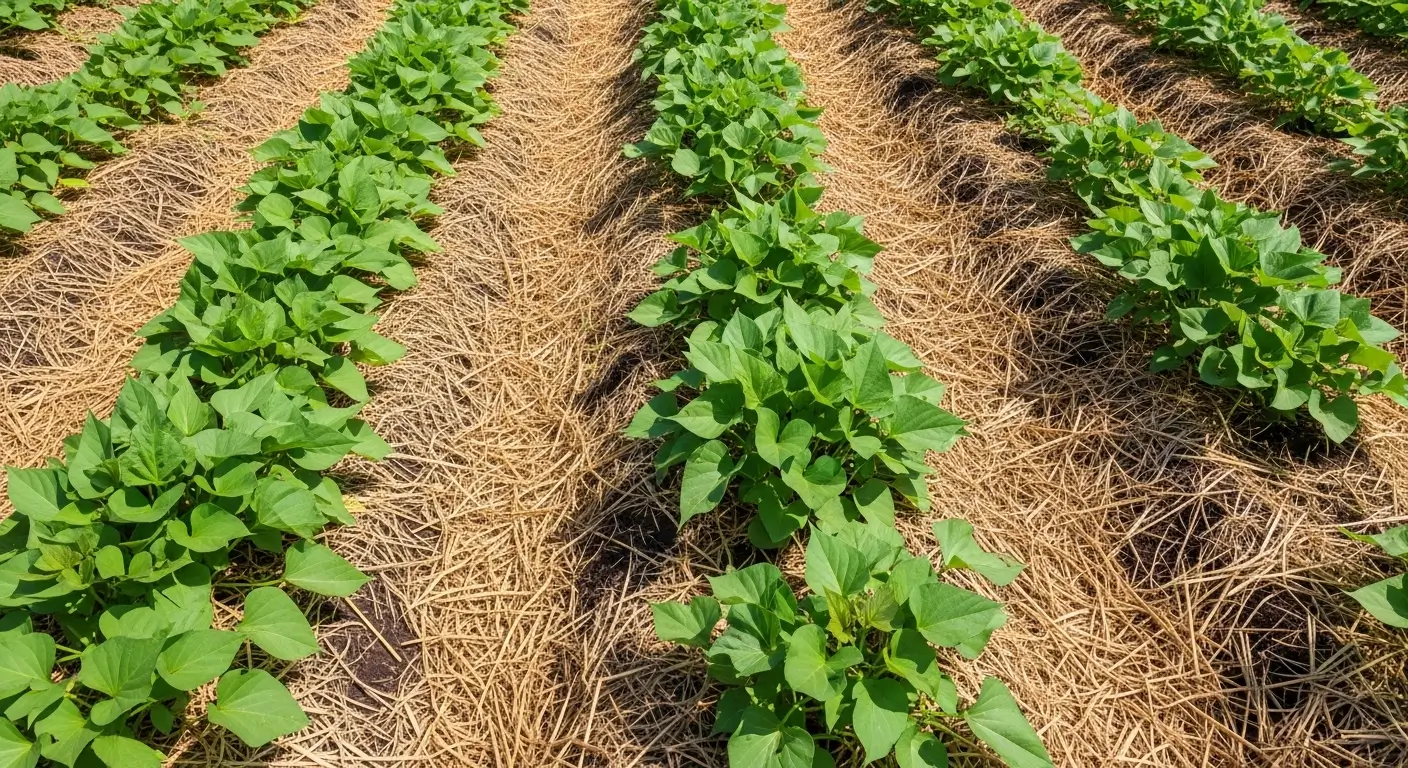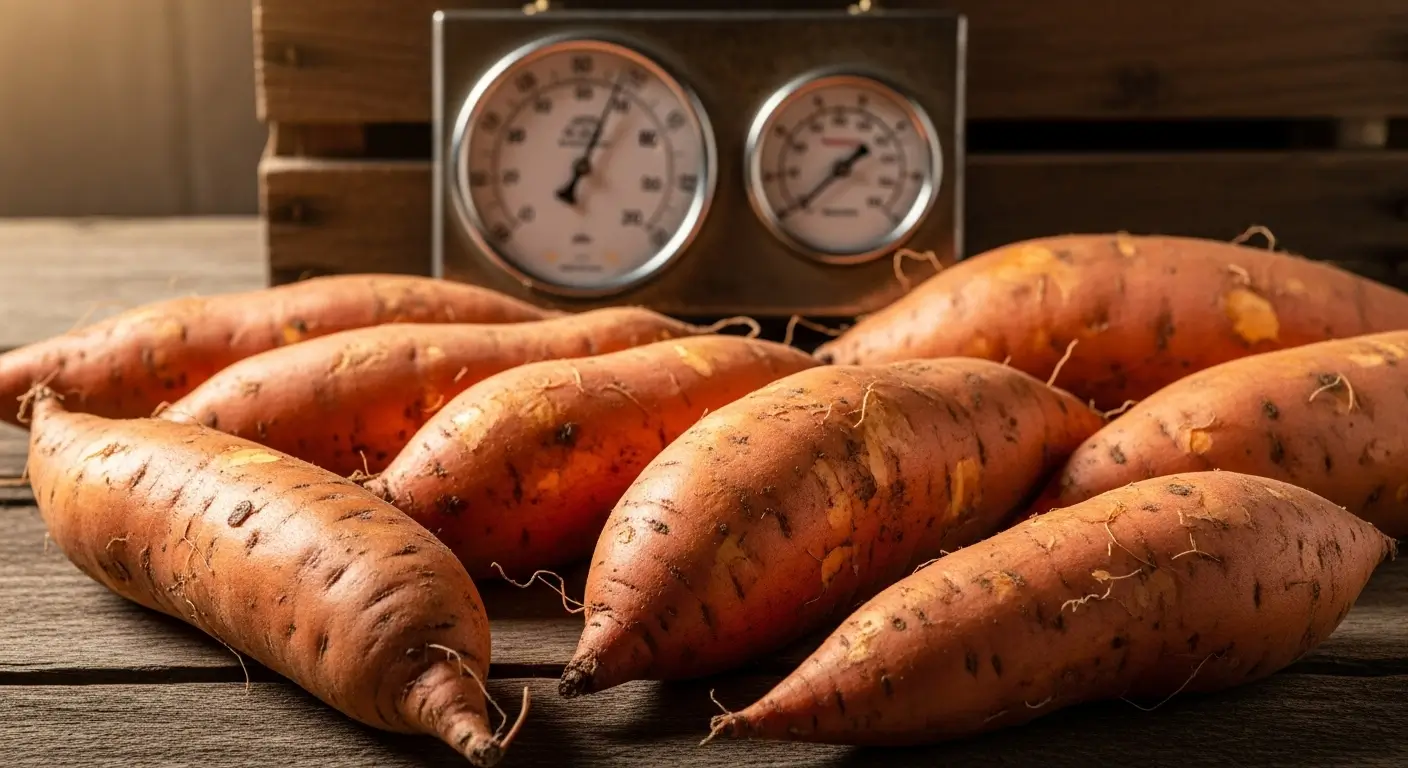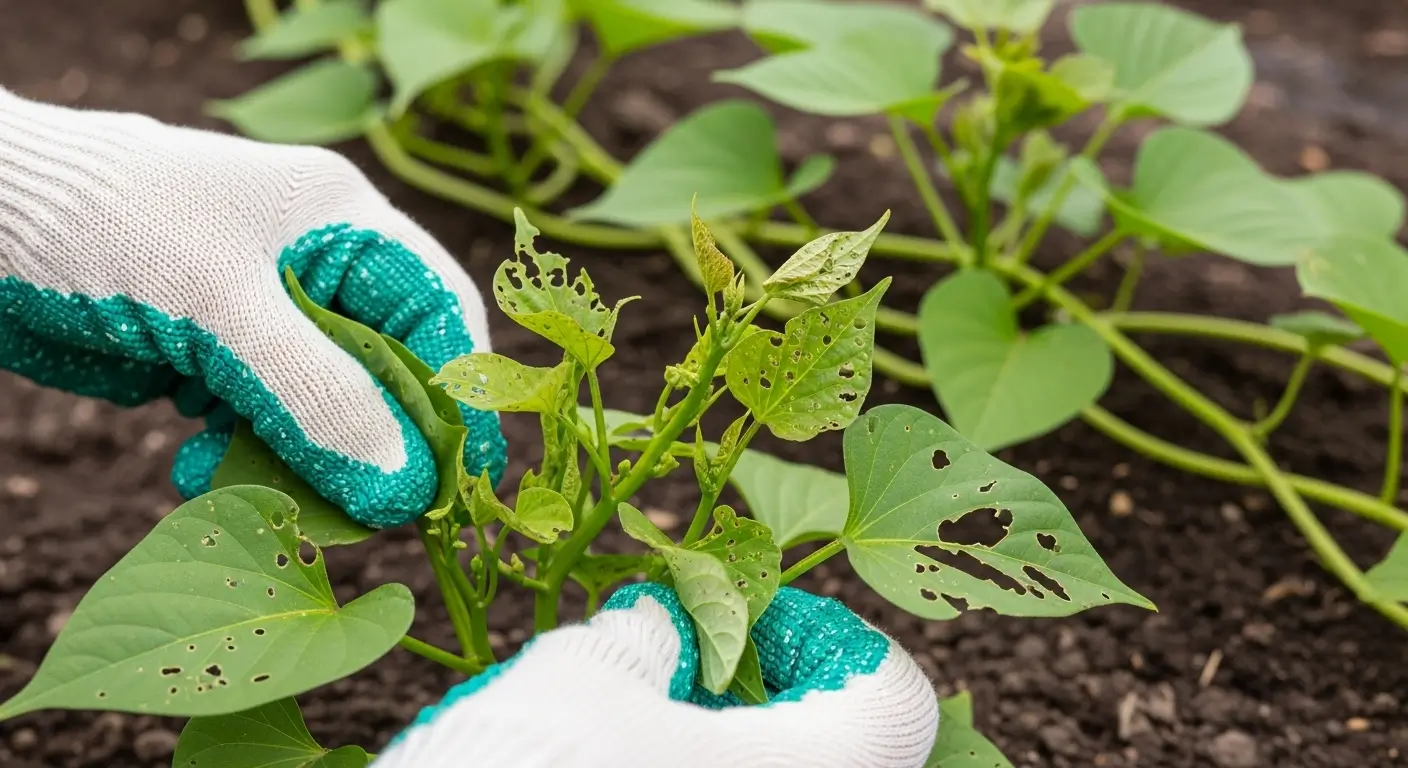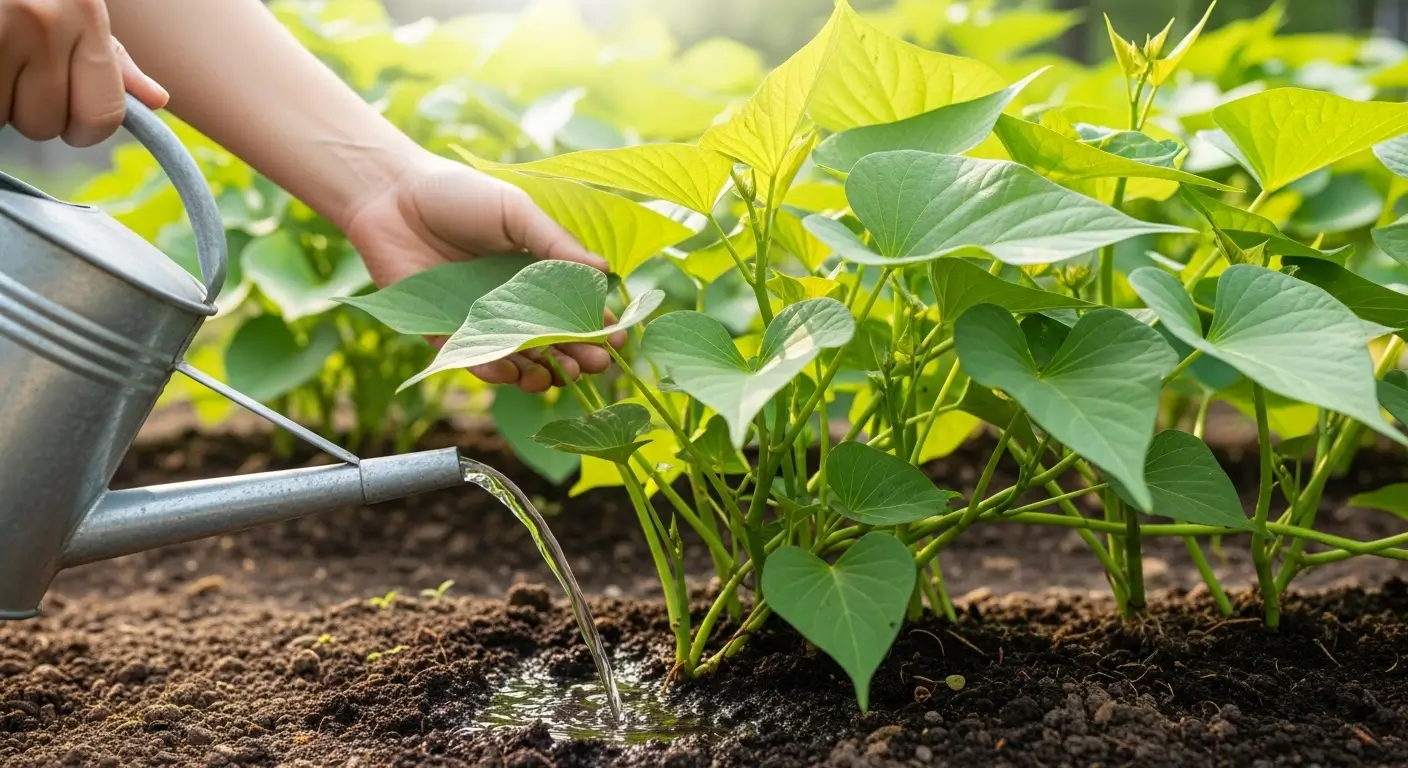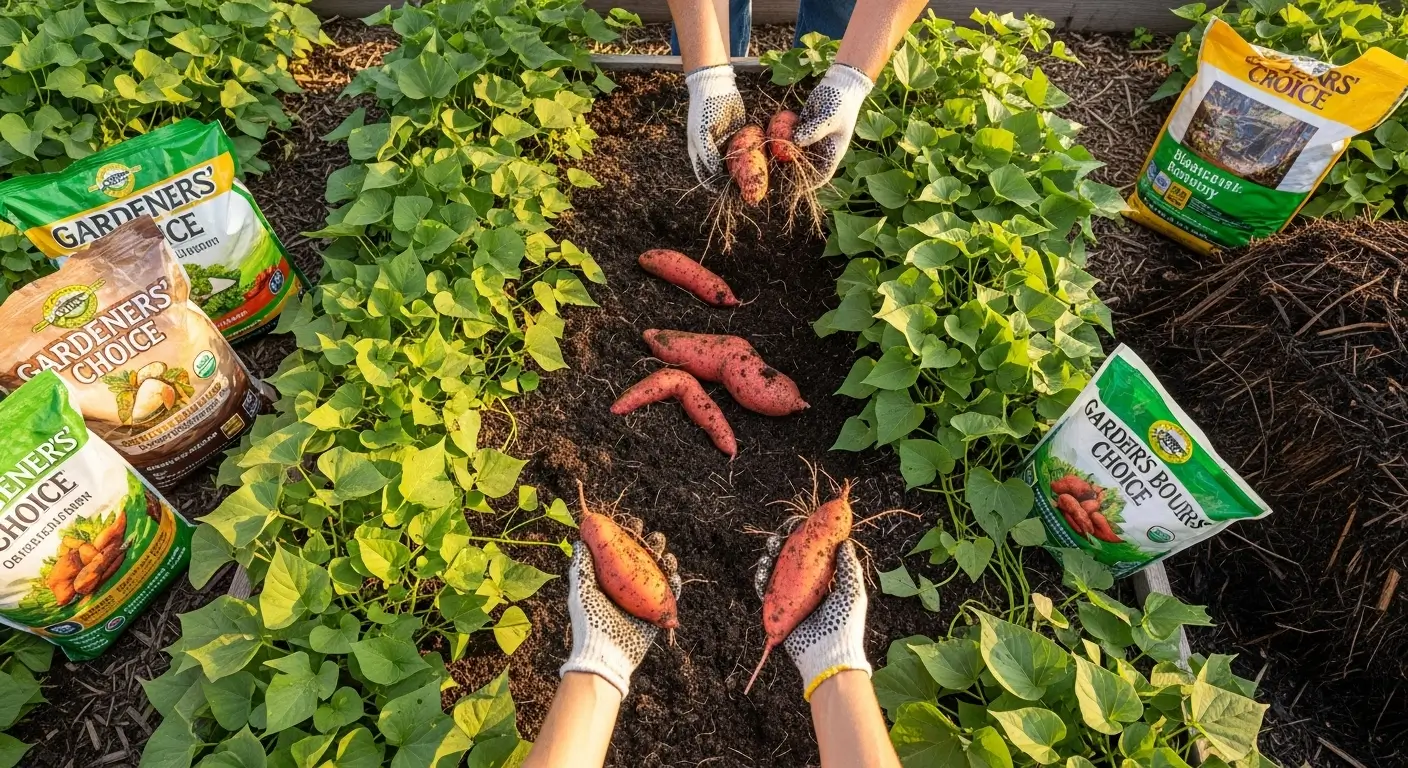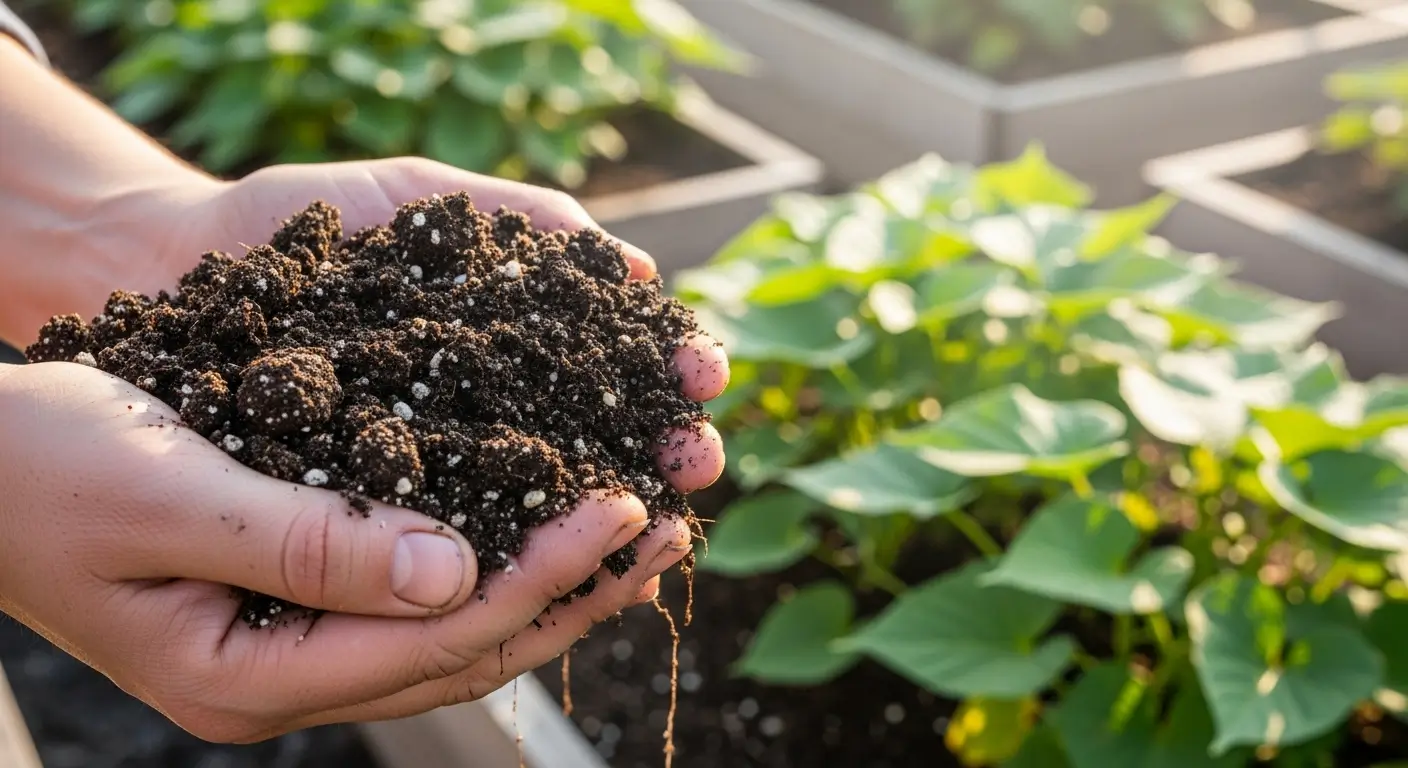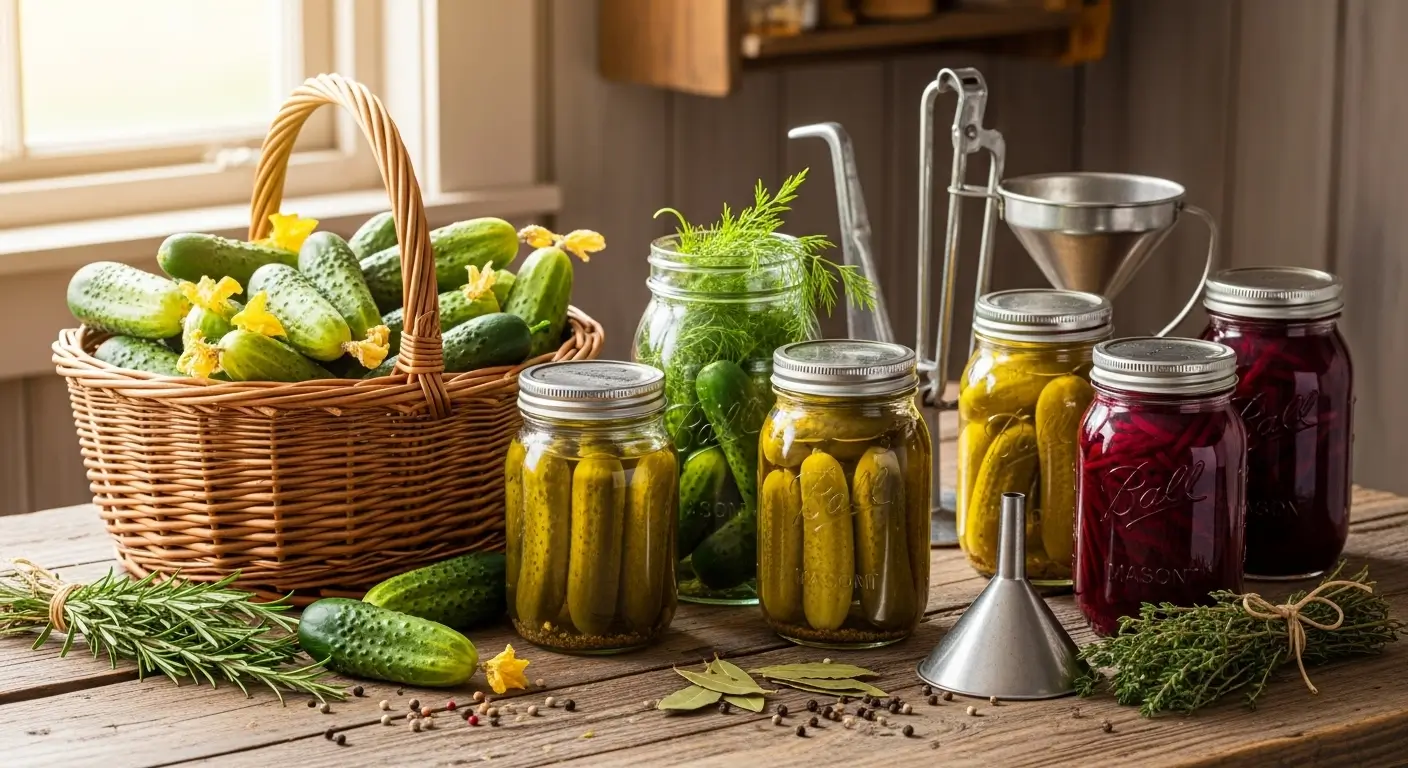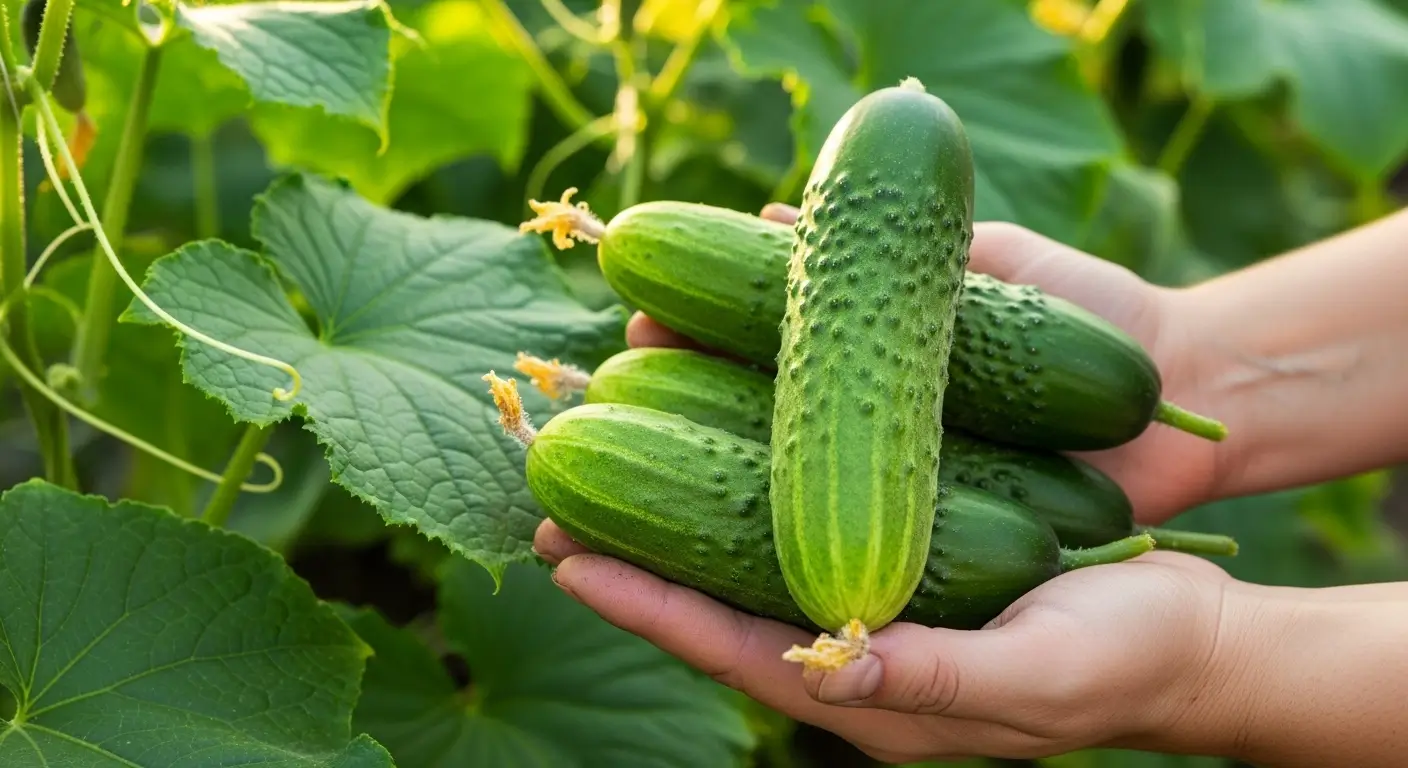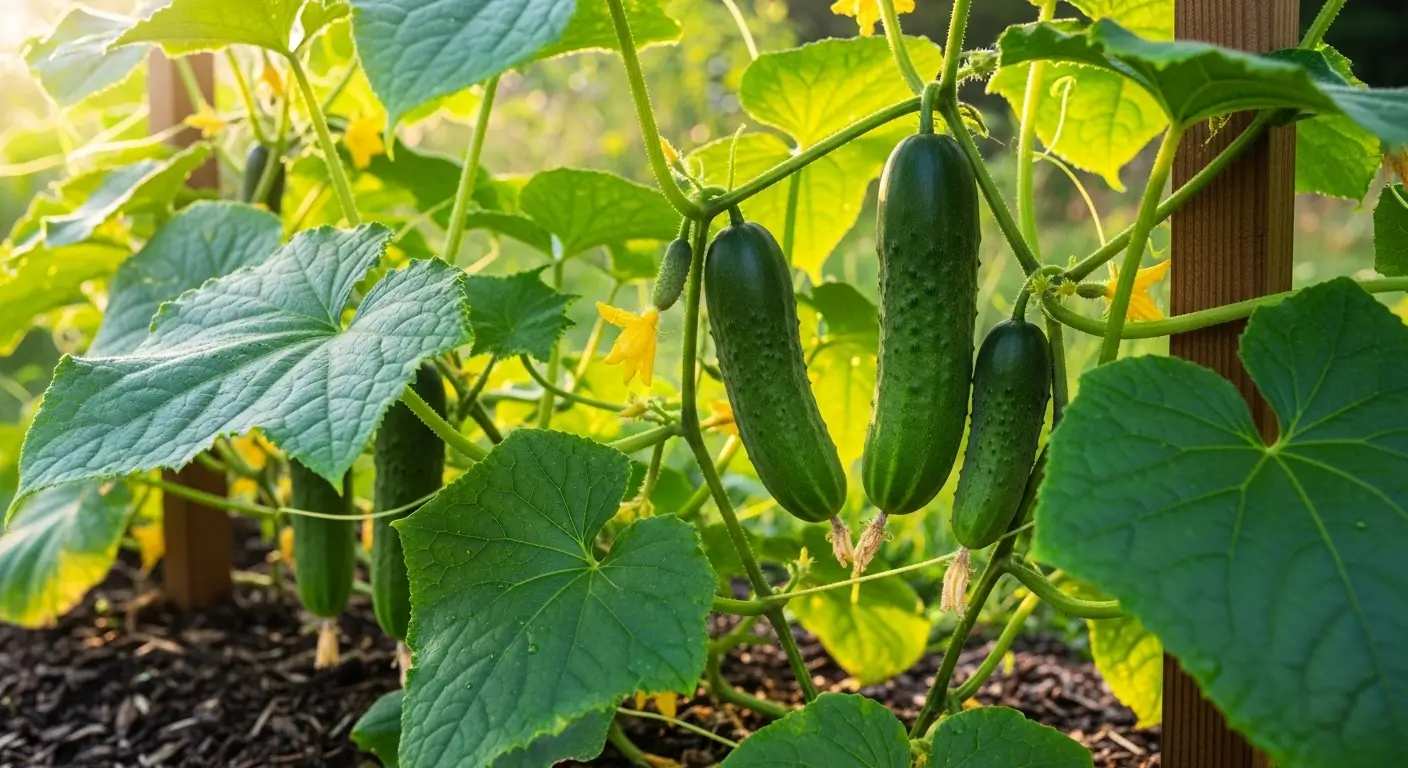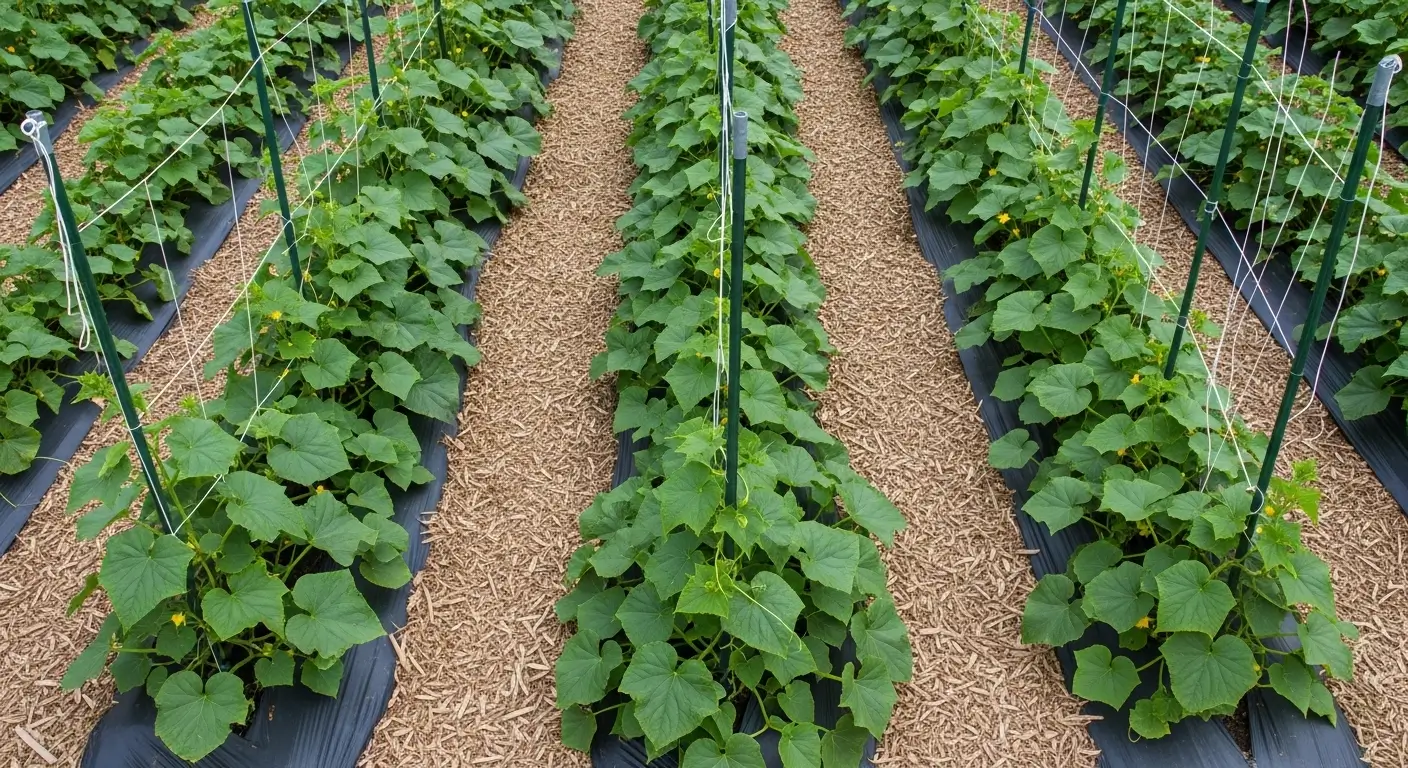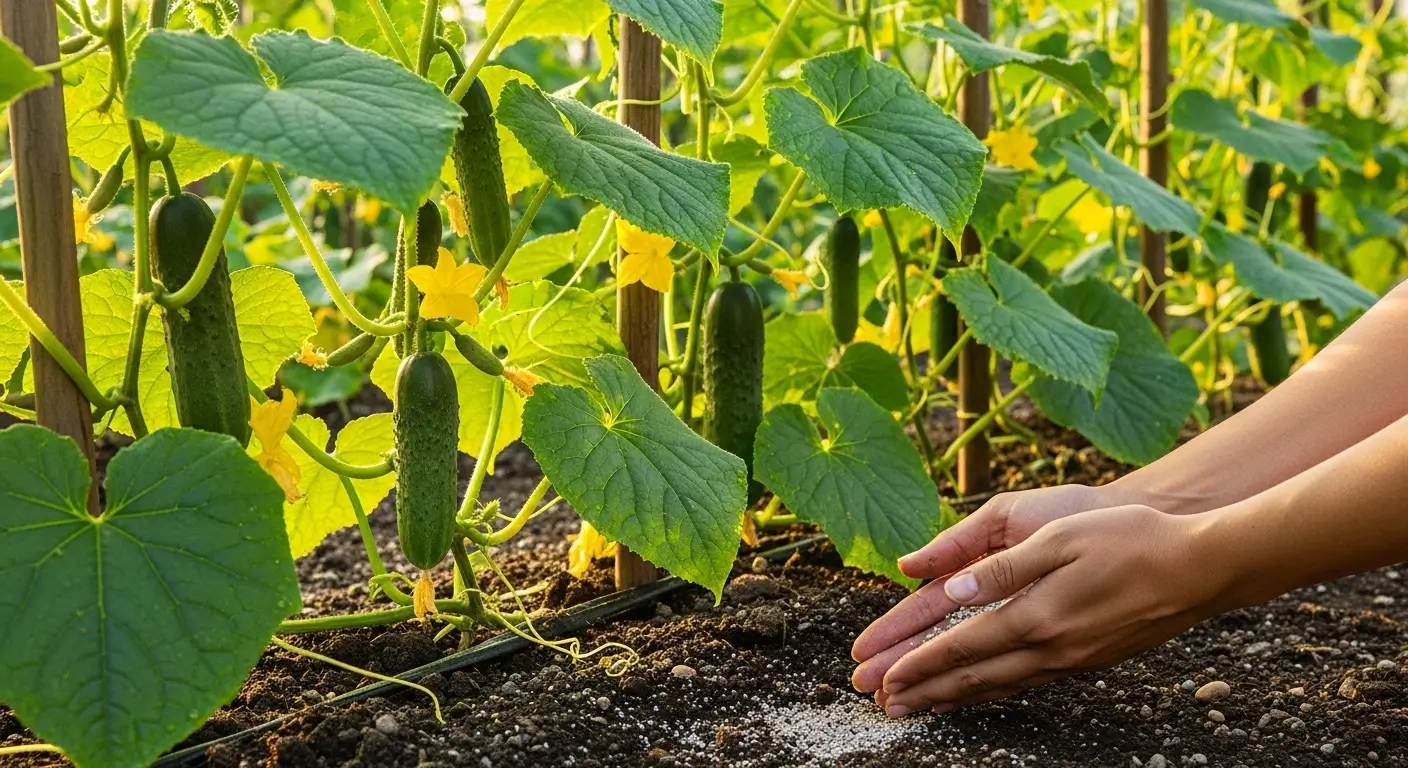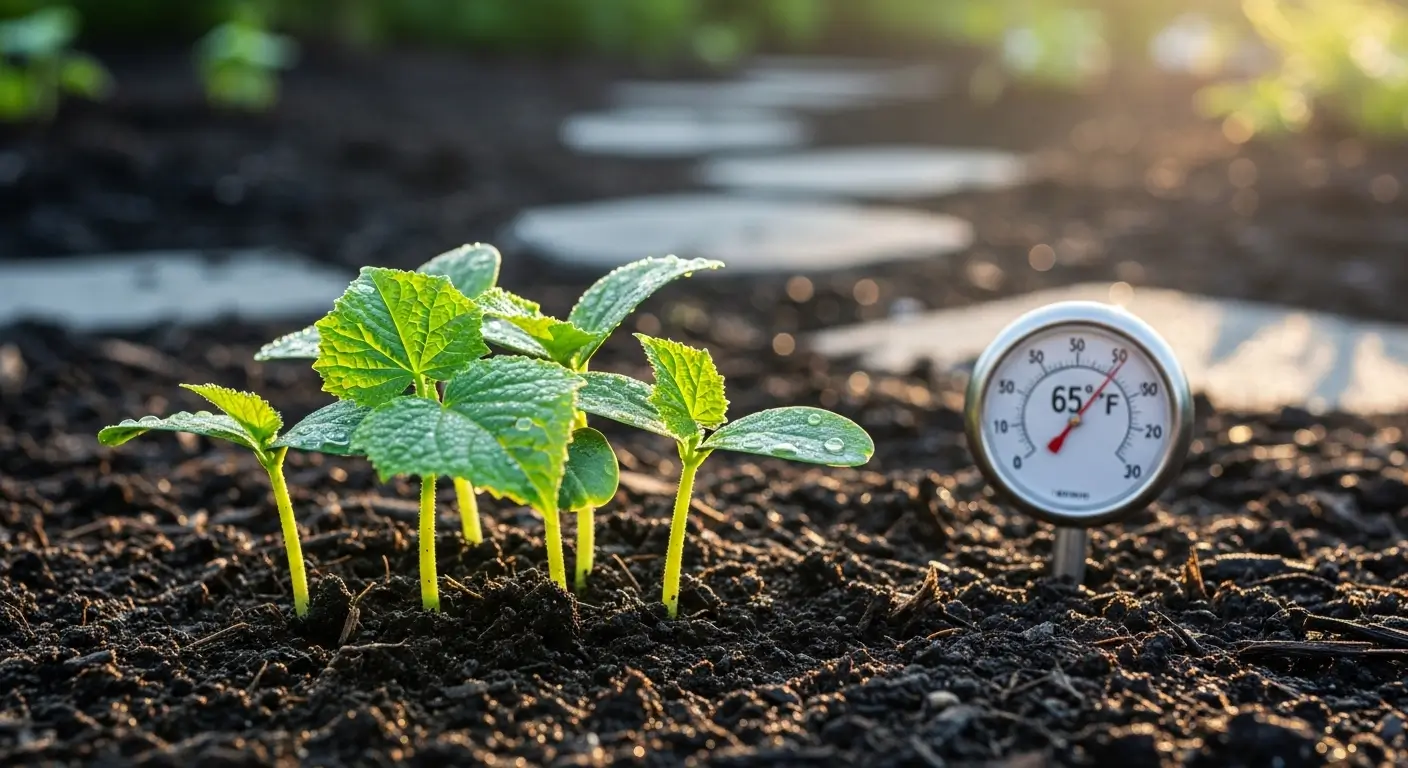Okay, so picture this: It’s 2019, and I’m standing in my garden looking like a total disaster. My sweet potatoes? They’re basically giving me the plant equivalent of the silent treatment. Weeds are taking over like they own the place, the soil’s drier than my sense of humor, and I’m wondering if maybe I should stick to buying sweet potatoes from the store like a normal person.
That’s when my neighbor, Mrs. Chen, walks over—you know how neighbors do when they see you failing spectacularly at something—and she looks at my sad little patch and goes, “Grace, where’s your mulch?”
Three words. That’s all it took to completely flip my sweet potato game upside down.
Look, mulching sweet potatoes isn’t rocket science, but it’s honestly the difference between “meh” potatoes and those gorgeous ones that make your Instagram followers ask what your secret is. I’ve been messing around with different mulching tricks for five years now, and I’m telling you—it’s like giving your sweet potatoes a spa day that lasts all season.
So grab a coffee (or whatever keeps you going), and let me spill everything I know about mulching these beauties. Proper mulching is about to become your garden superpower if you’re fighting weeds, forgetting to water, or want to show off at the farmer’s market.
Table of Contents
Why Sweet Potatoes Absolutely Love Mulch (The Science Behind the Magic)
A fun fact blew my mind: sweet potatoes aren’t even related to regular potatoes. They’re basically fancy morning glories that decided to make food underground. Wild, right?
But here’s why that matters—these plants are a bit high-maintenance regarding their root situation. They’ve got feeding roots doing their thing up top, and then those chunky storage roots (the good stuff we eat) developing down below. Those storage roots are super picky about temperature and moisture. Without mulch, I’ve watched soil temps swing 15 degrees in one day. That’s like putting your plants through gardening boot camp when they want to chill and make tubers.
Here’s what mulch actually does (and why your sweet potatoes will basically worship you):
Keeps Things Cozy: Sweet potatoes are tropical divas who want their soil between 70-80°F. Mulch is like wrapping them in a perfect temperature blanket—warm at night, not scorching during the day.
Holds onto Water: These plants need steady moisture, especially when making those tubers we’re after. My mulched beds stay happy for 3-4 days longer than bare soil. That’s 3-4 fewer days of me running around with a hose looking frazzled.
Kicks Weeds to the Curb: This might be my favorite thing ever. A thick layer of mulch eliminates 90% of my weed drama. And trust me, you don’t want to be crawling around pulling weeds from under sprawling sweet potato vines in August. That’s a special kind of gardening hell.
Protects the Soil: Sweet potatoes need loose, fluffy soil to expand into. Mulch keeps heavy rain from turning your perfect soil into concrete and protects all that good structure your tubers need. Cornell University’s Soil Health team confirms that mulch provides benefits as both a barrier and insulation layer, helping suppress weeds while slowing dramatic temperature changes – exactly what sweet potatoes need for optimal growth.
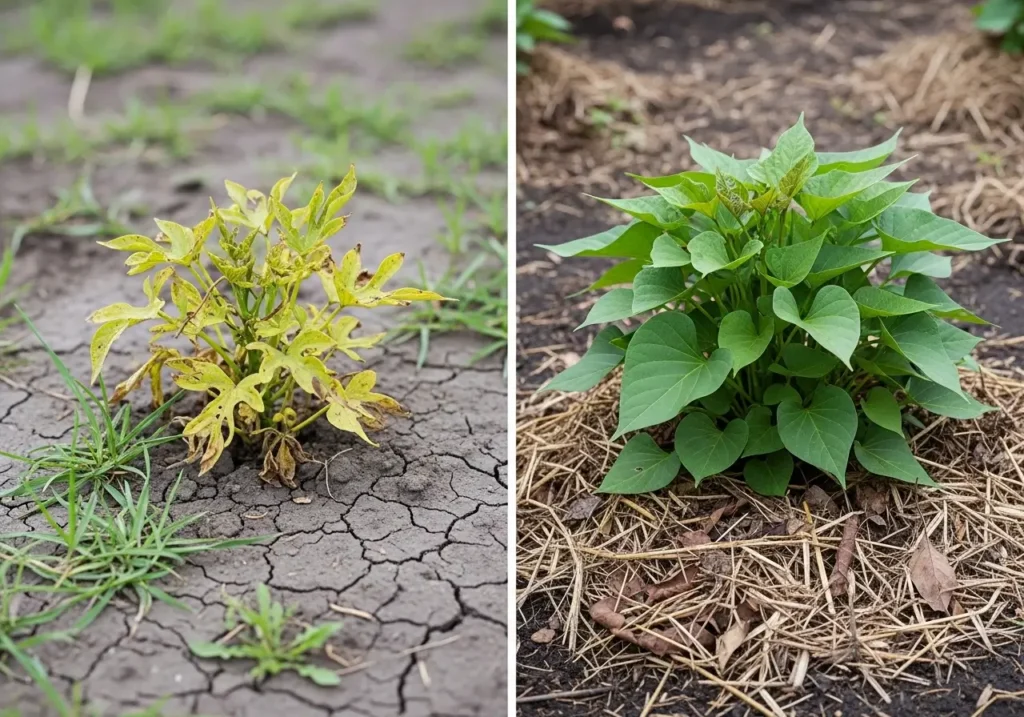
The Best Mulch for Sweet Potatoes: My Top Picks (Plus One Surprising Winner)
Alright, I’ve tried everything short of shredded dollar bills (though at mulch prices these days…). Here’s what actually works in real life, not just in perfect gardening magazine photos.
Organic Mulch Options: The Tried and True Champions
Straw (My Ride-or-Die Choice) I know what you’re thinking—straw? That’s it? But seriously, hear me out. Straw is like the perfect best friend for sweet potatoes. It’s not clingy (good air flow), sticks around all season without getting weird, and you can push it aside easy-peasy when it’s harvest time.
Just make sure you’re getting actual straw and not hay. I learned this the hard way when my “mulched” bed turned into a grass festival. Apparently, hay has seeds. Who knew? (Everyone except me, apparently.)
Aged Compost. This is my backup choice, especially if you’re making your own Compost like a garden wizard. A couple of inches of good Compost gives you all the mulch benefits and slowly feeds your plants. Just don’t use the fresh stuff—that’s like serving your plants a meal that’s still cooking.
Shredded Leaves Free mulch is the best mulch! Every fall, I’m that person collecting bags of leaves like some leaf hoarder. By spring, they’re perfect. Oak leaves are fantastic because they don’t turn into a soggy mess like maple leaves can.
Wood Chips. These work great, but there’s a catch. Use old, weathered chips, not fresh ones. Fresh wood chips are nitrogen thieves and will leave your plants hangry. If you’ve only got fresh chips, throw some compost under them first.
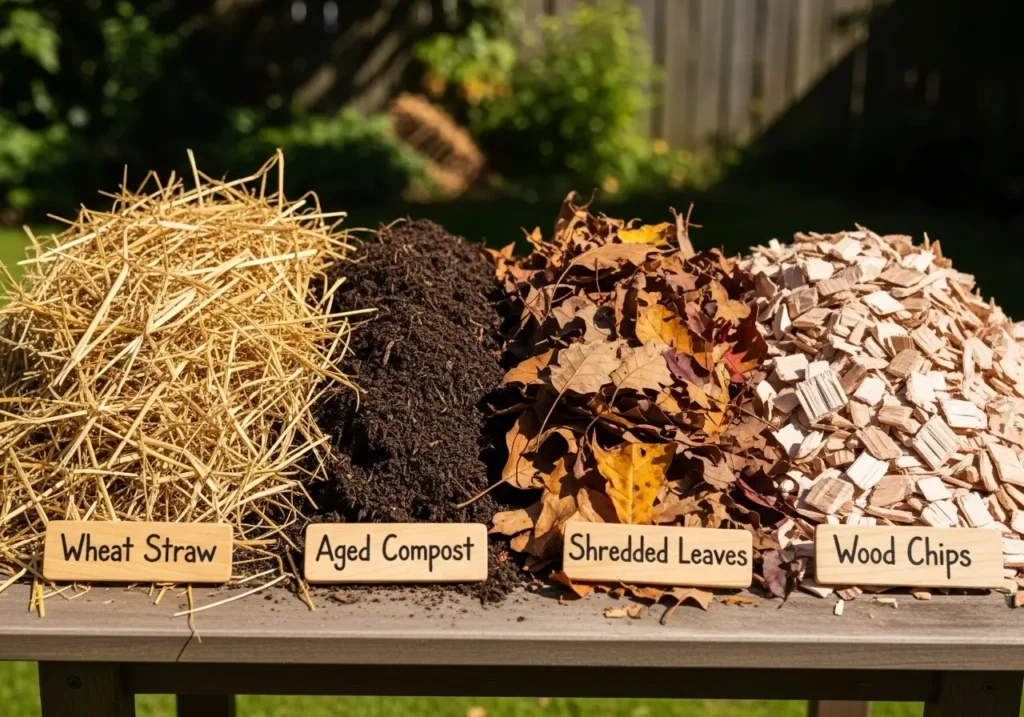
Black Plastic Mulch Sweet Potatoes: When Synthetic Makes Sense
Okay, confession time. As someone who’s usually all about organic life, I found trying black plastic mulch on sweet potatoes took me forever. But sometimes plastic makes sense.
When I Actually Use Plastic:
- Short growing seasons (looking at you, zones 5-6)
- Soggy, cold springs that won’t quit
- Clay soil that’s colder than my ex’s heart
- When you need maximum heat and don’t care about looking fancy
I use the 1.5 mil black plastic and put it down 2-3 weeks before planting to get that soil nice and toasty. The trick is cutting decent-sized X’s for planting—about 6 inches across so the vines have room to do their thing.
The Not-So-Great Parts: It doesn’t feed your soil, it’s not exactly earth-friendly, and you’re stuck throwing it away at the end. I only use it when Mother Nature’s being brutal.
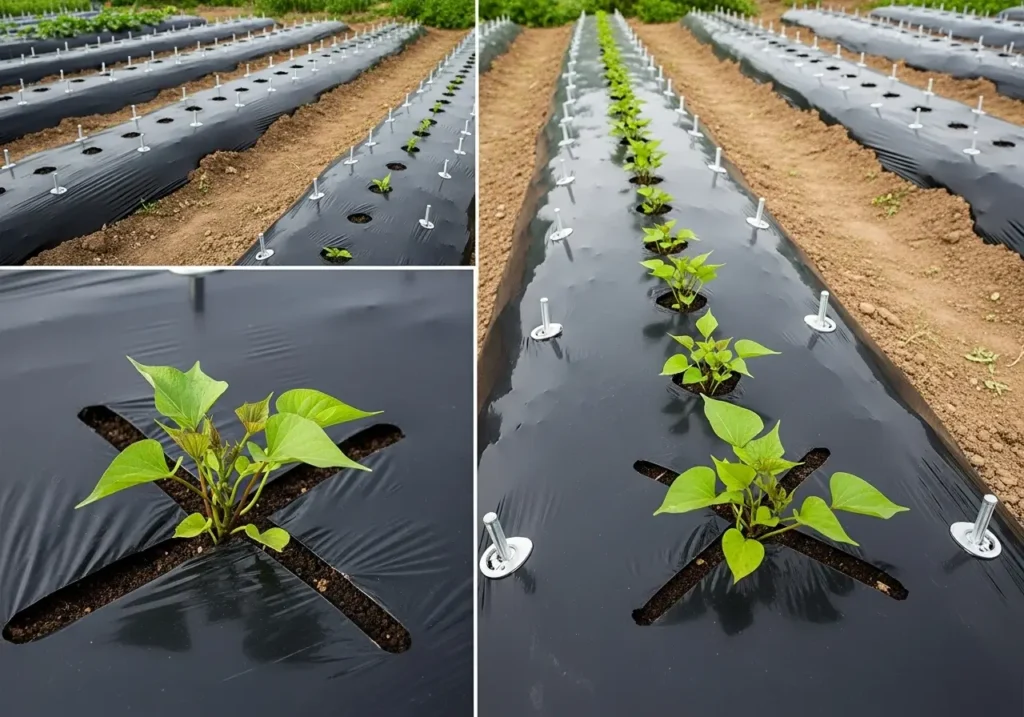
The Surprising Winner: Newspaper + Straw Combo
This is my secret weapon that makes me feel like a genius. I lay down 6-8 sheets of newspaper (overlapping like shingles), get it good and wet, then pile on 3-4 inches of straw. The newspaper stops weeds cold while the straw handles everything else.
Best part? By fall, the newspaper’s mostly gone and has improved your soil. Just skip the shiny colored pages—stick to dull black and white.
Mulching Sweet Potatoes Depth: Getting the Goldilocks Zone Just Right
This is where people mess up big time. Too little and you’re wasting your time; too much and you’re creating problems you don’t want.
Here’s What Actually Works:
Organic Stuff: 3-4 inches for most materials. I usually start with 4 inches in spring because organic mulch shrinks as it breaks down, like my favorite sweater in the dryer.
Plastic: Just lay it flat and pin it down every few feet so it doesn’t turn into a sail when the wind picks up.
Climate Adjustments: Super hot areas should go 4-5 inches deep for extra cooling. Cooler zones can get away with 2-3 inches, especially if you’re doubling up with plastic.
Here’s a rookie mistake I made: I mulched right up to the stems of my baby sweet potato plants. Basically, they created a fungus spa that nearly killed them. Now I leave a little breathing room around each plant until they’re tough enough to handle it.
Now, I know what you’re thinking—”Grace, how much mulch do I actually need to buy?” I used to stand in the garden center doing math on my phone like some kind of mulch mathematician. So I put together this handy calculator to save you the headache (and the embarrassing phone calculator moments). Just plug in your garden bed dimensions and it’ll tell you exactly how much to get:
🌱 Sweet Potato Mulch Calculator
Calculate exactly how much mulch you need for your sweet potato garden
💡 Pro Tips for Sweet Potato Mulching:
Choose your mulch type above to see specific recommendations!
Pretty cool, right? I wish I'd had this tool when I was starting out—would've saved me from that time I bought way too much straw and had my yard looking like a farm supply store exploded."
When to Apply Mulch: Timing Is Everything
Timing with mulch is like timing a joke—get it wrong and everything falls flat. I've learned this through some spectacular failures that still make me cringe.
My Sweet Potato Mulching Schedule:
2-3 Weeks Before Planting (plastic only): Get that plastic down to start warming things up. I've seen soil temps jump 8-12 degrees with this trick.
Planting Day: If you're going organic, hold your horses. Plant first, water well, then wait.
2-3 Weeks After Planting: This is the sweet spot for organic mulch. Your plants should be settling in with new growth, and the weather should be consistently warm.
I once mulched right after planting during a cold, wet spring. My poor plants just pouted for weeks because I tucked them into a cold, damp blanket. Now I wait for new growth and decent weather.
Mid-Season Check-In: Around mid-July, I peek under my mulch and add more if it's gotten thin. Stuff compresses and disappears—like the sock phenomenon, but with garden materials.
Application Techniques That Actually Work (Learning from My Mistakes)
Let me save you from some of my more embarrassing garden moments:
Prep Work Matters: Before any mulch goes down, I make sure the bed is weed-free and moist. Mulching over weeds gives them a fancy hideout, and mulching bone-dry soil keeps water from getting where it needs to go.
The Pull-Back Method: I mulch right up to where the vines start spreading, then gradually move it back as they grow. This lets the vines root at their little nodes (hello, bigger harvest!) while keeping weeds under control.
Water Sandwich: I always water before mulching, then give it another light sprinkle to settle everything down nicely.
Don't forget the Pathways: Mulch between your beds, too. It stops weeds from sneaking in and makes everything look way more professional than it actually is.
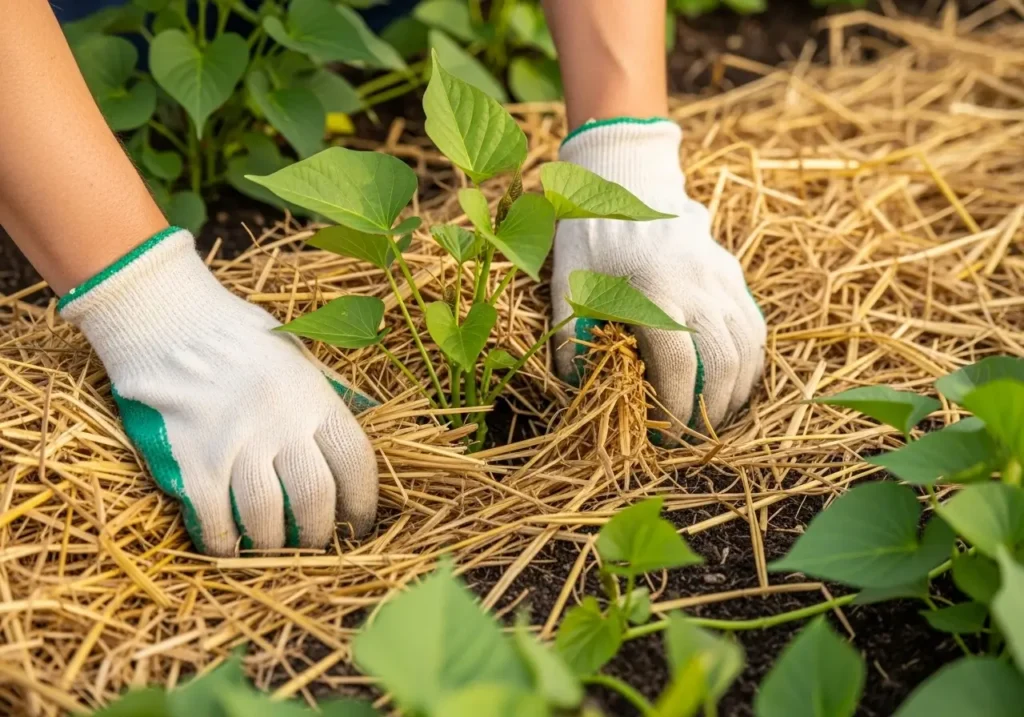
Common Mulching Mistakes (So You Don't Have to Learn the Hard Way)
I've made pretty much every mulching mistake possible, so learn from my pain:
The Mulch Volcano: Don't pile mulch up around plant stems like you're building a tiny mountain. That's basically creating a humid little disease factory. Leave some breathing room!
Fresh Grass Clipping Disaster: Tried this once. Fresh grass heats up as it rots and can literally cook your plants. If you're using grass clippings, let them dry out first, or you'll be sorry.
Ignoring the Bug Hotel: Mulch can become slug and snail central if you're not paying attention. I do regular bug patrol and keep beer traps handy because slugs are lightweights.
The Eager Beaver: Don't mulch too early! Sweet potatoes are tropical babies, and cold, mulched soil is like serving them ice cream in a snowstorm.
Seasonal Mulch Management: Keeping It Effective All Season Long
Spring Setup (May-June): This is mulch party time. I like getting it done before the summer heat makes me want to hide indoors with the AC.
Summer Maintenance (July-August): Monthly mulch check—like checking your oil, but way more fun. This is also when I carefully pull mulch away from spots where vines are trying to root. More roots = more sweet potatoes = happy Grace.
Fall Prep (September): About a month before harvest, I gradually pull mulch back. This warms the soil so the sweet potatoes can do their final sizing. Check out our complete sweet potato growing guide for harvest timing tips.
Post-Harvest Cleanup (October-November): Time to deal with all that mulch. I either toss it in the Compost or work it into the soil if it's broken down enough. Future Grace always thanks past Grace for this.
Combining Mulching with Other Sweet Potato Care Practices
Mulching isn't a one-trick pony—it works best as part of your whole sweet potato care routine:
Watering: Good mulch cuts your watering needs way down, but you still need to keep an eye on things. I stick my finger right through the mulch to check root-level soil moisture. Our sweet potato watering schedule guide has all the details.
Feeding: Mulched beds hold onto nutrients better, plus organic mulches slowly feed your plants as they break down. You might need less fertilizer, which is excellent for your wallet. Check out our sweet potato fertilizer requirements guide for the full scoop.
Planting Depth: Getting your planting depth right becomes super important with mulch since you're adding another layer on top. Make sure those slips are planted correctly before you start mulching. Our sweet potato planting depth guide covers this perfectly.
Key Takeaways for Sweet Potato Mulching Success
After years of trial and error (mostly error), here's what actually matters:
- Wait for warm weather: Don't jump the gun—soil needs to be consistently above 65°F
- Pick your fighter: Straw wins for organic; black plastic for heat in cool areas
- Get the thickness right: 3-4 inches for organic stuff, flat for plastic
- Give plants space: 2-3 inches of breathing room around each plant
- Stay on top of it: Check monthly and add more as needed
Your Sweet Potato Mulching Journey Starts Here
I'll never forget Mrs. Chen's face when she saw my harvest that first mulched year—nearly triple what I'd grown, with the most gorgeous, perfect sweet potatoes I'd ever pulled out of the ground. That's what proper mulching can do for you.
The best part about mulching sweet potatoes? It's not complicated, it doesn't cost a fortune, but the payoff is enormous. Whether you go with organic options like straw and Compost or decide plastic makes sense for your situation, you're setting yourself up for serious success.
If you're new to this mulching thing, try it on a few plants this year. Compare them to your unmulched ones and prepare to be amazed. I promise you'll be texting me about your harvest by fall.
So what's your mulching story? Ever tried anything I haven't covered? Made any spectacular mistakes I can learn from? Drop a comment and let's chat—I'm always up for swapping garden stories, especially if they involve sweet potato success (or hilarious failures)!
Frequently Asked Questions About Mulching Sweet Potatoes
What is the best mulch for sweet potatoes?
Straw is the best mulch for sweet potatoes because it provides excellent air circulation, lasts the entire growing season, and is easy to pull back for harvesting. Make sure to use actual straw, not hay, as hay contains seeds that will germinate and create weed problems. Other good options include aged compost and shredded leaves.
How deep should mulch be for sweet potatoes?
Apply organic mulch 3-4 inches deep around sweet potato plants. This depth provides optimal moisture retention, temperature control, and weed suppression without creating air circulation problems. Always leave a 2-3 inch clear space around each plant stem to prevent fungal diseases and pest issues.
When should I apply mulch to sweet potatoes?
Apply mulch 2-3 weeks after planting sweet potato slips, when soil temperatures are consistently above 65°F and plants show new growth. Never mulch immediately after planting or during cool weather, as this can keep soil too cold and stress the plants.
Can I use black plastic mulch for sweet potatoes?
Yes, black plastic mulch works well for sweet potatoes, especially in cooler climates or short growing seasons. Install it 2-3 weeks before planting to pre-warm soil, and cut 6-inch X-shaped holes for planting. While effective for heat retention, plastic doesn't add organic matter to soil like organic mulches do.
